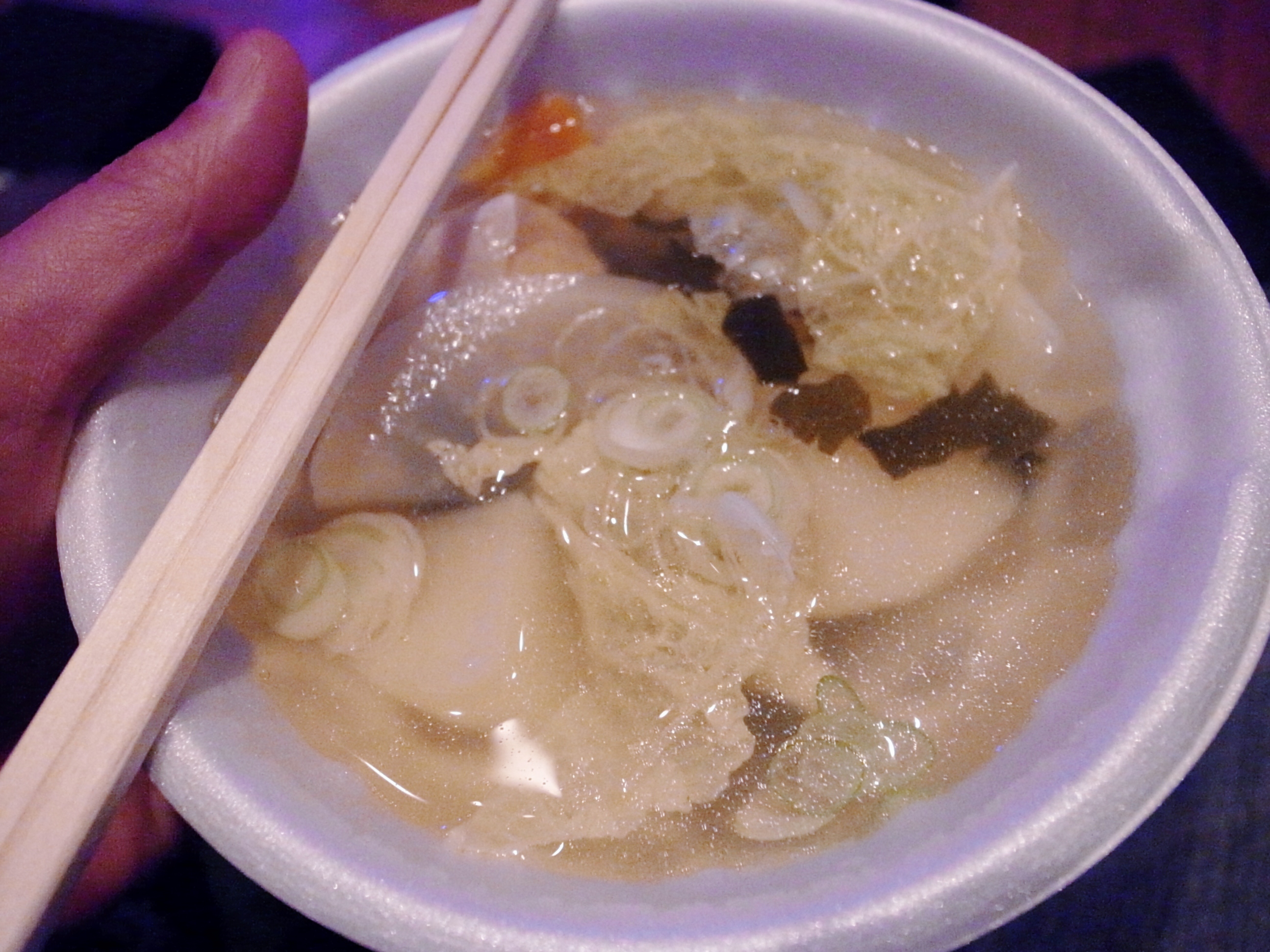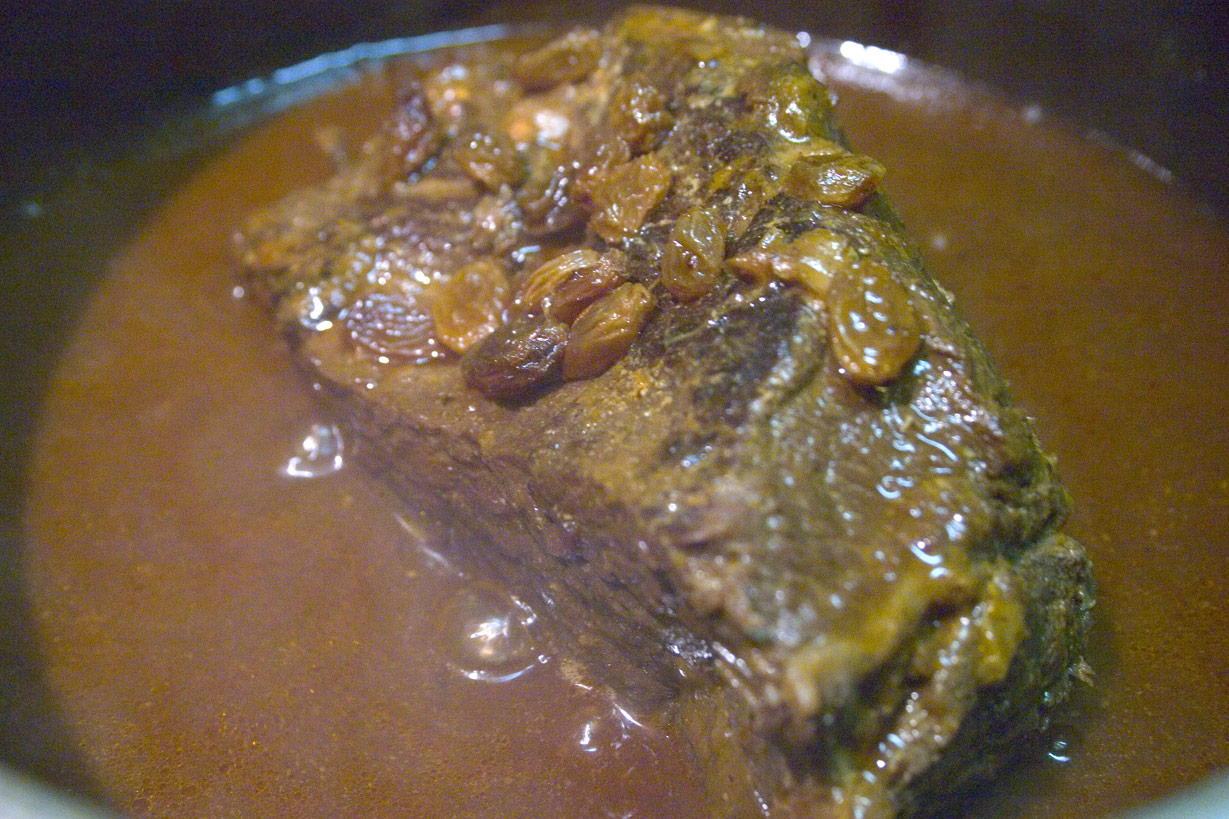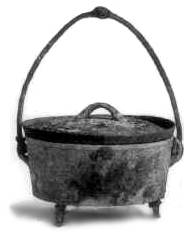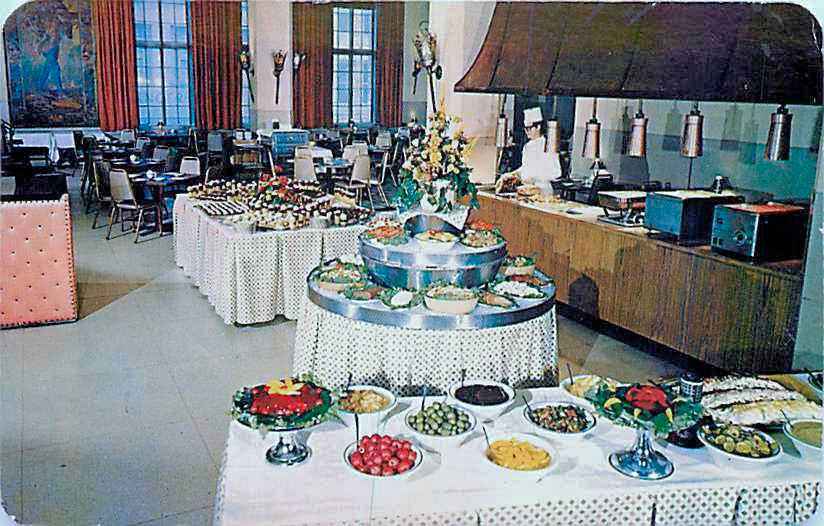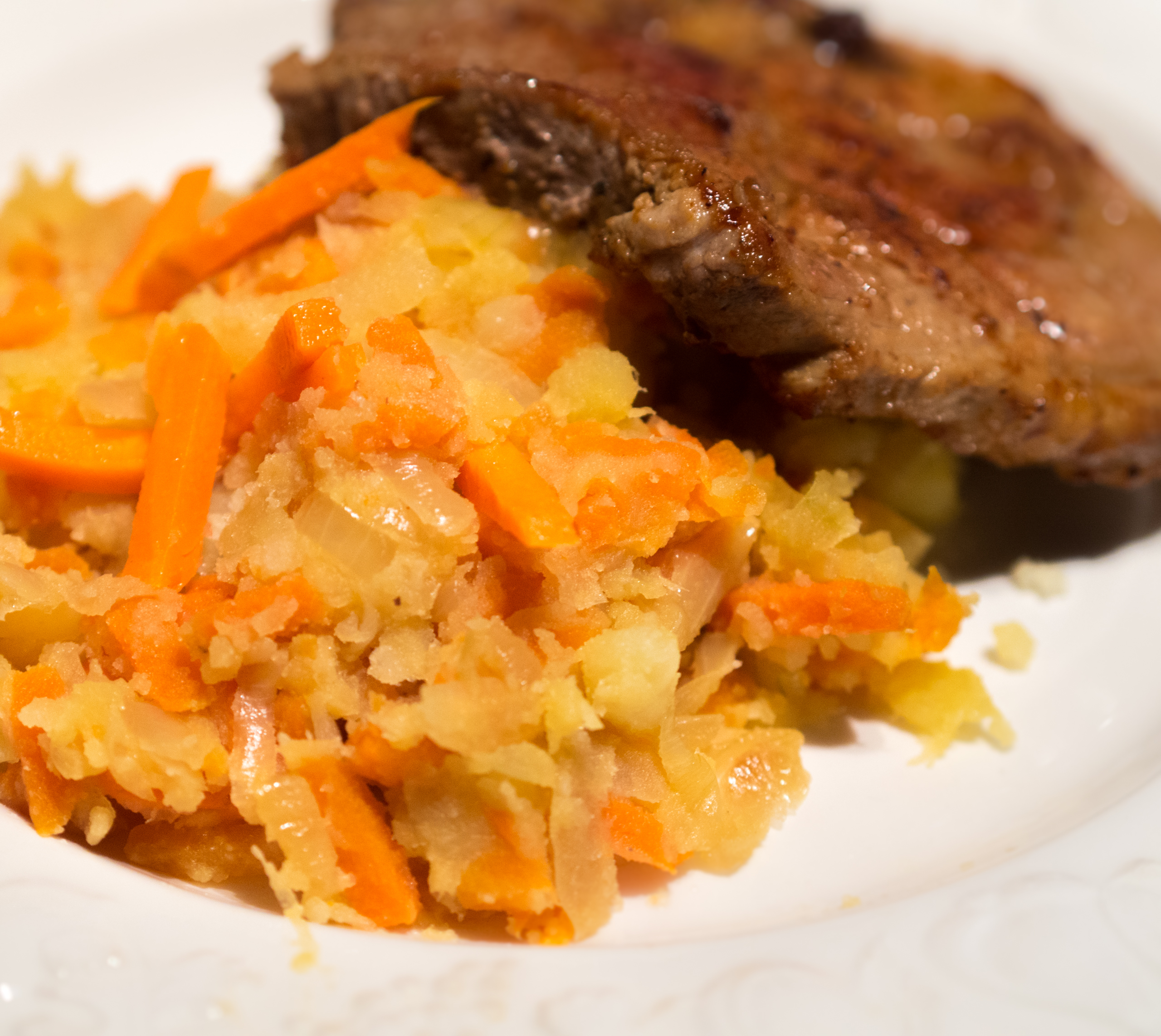|
Hachee
Hachée () is a traditional Dutch stew based on diced meat, fish or poultry, and vegetables. Hachee based on beef, onions, apple butter, breakfast bread and acid (usually vinegar or wine) is a typical example of traditional Dutch cuisine. Clove and bay leaves are added to the thick gravy. It is usually served with potatoes. Dutch people may occasionally combine hachee with ''hutspot''. Origin The word ''hachée'' in French means chopped or ground, being the past participle of the verb ''hacher'' -- to chop or grind. Hachées have been described in Medieval buffets, although the exact recipe usually is not described. The stew probably has its origin in the reuse of meat cooked in a Dutch oven together with vegetables that happened to be available. Wine or vinegar were added to make the meat more tender. See also * List of stews This is a list of notable stews. A stew is a combination of solid food ingredients that have been cooked in liquid and served in the resultant gra ... [...More Info...] [...Related Items...] OR: [Wikipedia] [Google] [Baidu] |
Dutch Cuisine
Dutch cuisine ( nl, Nederlandse keuken) is formed from the cooking traditions and practices of the Netherlands. The country's cuisine is shaped by its location in the fertile North Sea river delta of the European Plain, giving rise to fishing, farming (for crops and domesticated animals), and trading over sea, its former colonial empire and the spice trade. Dutch cuisine is often seen as bland, due to a culture of frugality. In the late 19th and early 20th century, Dutch food became designed to be economical and filling rather than pleasing, with many vegetables and little meat: breakfast and lunch are typically bread with toppings like cheese, while dinner is meat and potatoes, supplemented with seasonal vegetables. The diet contains many dairy products and is relatively high in carbohydrates and fat, reflecting the dietary needs of the laborers. Without many refinements, it is best described as ''rustic'', though many holidays are celebrated with special foods. During the 20t ... [...More Info...] [...Related Items...] OR: [Wikipedia] [Google] [Baidu] |
List Of Stews
This is a list of notable stews. A stew is a combination of solid food ingredients that have been Cooking, cooked in liquid and served in the resultant gravy. Ingredients in a stew can include any combination of vegetables (such as carrots, potatoes, beans, onions, Capsicum, peppers, tomatoes, etc.), and frequently with meat (especially tougher meats suitable for moist slow-cooking) such as beef. Poultry, pork, Lamb and mutton, lamb or mutton, sausages, and seafood are also used. Stews Unsorted * Capra e fagioli * Ginataang kalabasa * Ginataang labong * Kokotxas * Kontomire stew * Or lam * Pepián * Waknatoy See also * Fish stew – includes a list of many fish stews * List of Azerbaijani soups and stews * List of fish and seafood soups * List of Japanese soups and stews * List of soups * List of Spanish soups and stews References {{Soups Stews, Soup-related lists, ... [...More Info...] [...Related Items...] OR: [Wikipedia] [Google] [Baidu] |
Cuisine Of The Netherlands
Dutch cuisine ( nl, Nederlandse keuken) is formed from the cooking traditions and practices of the Netherlands. The country's cuisine is shaped by its location in the fertile North Sea river delta of the European Plain, giving rise to fishing, farming (for crops and domesticated animals), and trading over sea, its former colonial empire and the spice trade. Dutch cuisine is often seen as bland, due to a culture of frugality. In the late 19th and early 20th century, Dutch food became designed to be economical and filling rather than pleasing, with many vegetables and little meat: breakfast and lunch are typically bread with toppings like cheese, while dinner is meat and potatoes, supplemented with seasonal vegetables. The diet contains many dairy products and is relatively high in carbohydrates and fat, reflecting the dietary needs of the laborers. Without many refinements, it is best described as ''rustic'', though many holidays are celebrated with special foods. During the 2 ... [...More Info...] [...Related Items...] OR: [Wikipedia] [Google] [Baidu] |
Stew
A stew is a combination of solid food ingredients that have been cooked in liquid and served in the resultant gravy. A stew needs to have raw ingredients added to the gravy. Ingredients in a stew can include any combination of vegetables and may include meat, especially tougher meats suitable for slow-cooking, such as beef, pork, lamb, poultry, sausages, and seafood. While water can be used as the stew-cooking liquid, stock is also common. A small amount of red wine is sometimes added for flavour. Seasoning and flavourings may also be added. Stews are typically cooked at a relatively low temperature (simmered, not boiled), allowing flavours to mingle. Stewing is suitable for the least tender cuts of meat that become tender and juicy with the slow moist heat method. This makes it popular in low-cost cooking. Cuts having a certain amount of marbling and gelatinous connective tissue give moist, juicy stews, while lean meat may easily become dry. Stews are thickened by reduction ... [...More Info...] [...Related Items...] OR: [Wikipedia] [Google] [Baidu] |
Stew
A stew is a combination of solid food ingredients that have been cooked in liquid and served in the resultant gravy. A stew needs to have raw ingredients added to the gravy. Ingredients in a stew can include any combination of vegetables and may include meat, especially tougher meats suitable for slow-cooking, such as beef, pork, lamb, poultry, sausages, and seafood. While water can be used as the stew-cooking liquid, stock is also common. A small amount of red wine is sometimes added for flavour. Seasoning and flavourings may also be added. Stews are typically cooked at a relatively low temperature (simmered, not boiled), allowing flavours to mingle. Stewing is suitable for the least tender cuts of meat that become tender and juicy with the slow moist heat method. This makes it popular in low-cost cooking. Cuts having a certain amount of marbling and gelatinous connective tissue give moist, juicy stews, while lean meat may easily become dry. Stews are thickened by reduction ... [...More Info...] [...Related Items...] OR: [Wikipedia] [Google] [Baidu] |
Netherlands
) , anthem = ( en, "William of Nassau") , image_map = , map_caption = , subdivision_type = Sovereign state , subdivision_name = Kingdom of the Netherlands , established_title = Before independence , established_date = Spanish Netherlands , established_title2 = Act of Abjuration , established_date2 = 26 July 1581 , established_title3 = Peace of Münster , established_date3 = 30 January 1648 , established_title4 = Kingdom established , established_date4 = 16 March 1815 , established_title5 = Liberation Day (Netherlands), Liberation Day , established_date5 = 5 May 1945 , established_title6 = Charter for the Kingdom of the Netherlands, Kingdom Charter , established_date6 = 15 December 1954 , established_title7 = Dissolution of the Netherlands Antilles, Caribbean reorganisation , established_date7 = 10 October 2010 , official_languages = Dutch language, Dutch , languages_type = Regional languages , languages_sub = yes , languages = , languages2_type = Reco ... [...More Info...] [...Related Items...] OR: [Wikipedia] [Google] [Baidu] |
Sauerbraten
Sauerbraten is a traditional German roast of heavily marinated meat. It is regarded as a national dish of Germany, and is frequently served in German-style restaurants internationally. It can be prepared from a variety of meats, most often from beef, but also from venison, lamb and mutton, pork and horse.Sheraton 1965, p. 147.Kummer 2007, p. 553. Before cooking, the raw meat is marinated for three to ten days in a mixture of vinegar or wine, water, herbs, spices, and seasonings. Usually, tougher cuts of meat, such as rump roast or bottom round of beef, are used, and the long marinating tenderizes the meat. A Sauerbraten dinner is almost always accompanied by a hearty gravy resulting from its roasting and is most often served with potato pancakes ('' Kartoffelpuffer''), potato dumplings ('' Kartoffelklöße''), or ''Spätzle''.Saekel 2005, F-5. Ingredients used in the marinade, and accompaniments served with sauerbraten, vary across regions. Regional variants of the dish include ... [...More Info...] [...Related Items...] OR: [Wikipedia] [Google] [Baidu] |
Dutch Oven
A Dutch oven (not to be confused with masonry oven) is a thick-walled cooking pot with a tight-fitting lid. Dutch ovens are usually made of seasoned cast iron; however, some Dutch ovens are instead made of cast aluminium, or ceramic. Some metal varieties are enameled rather than being seasoned, and these are sometimes called French ovens. Dutch ovens have been used as cooking vessels for hundreds of years. They are often called casserole dishes in some English-speaking countries other than the United States ( means "cooking pot" in French), and in French. They are similar to both the Japanese and the , a traditional Balkan cast-iron oven, and are related to the South African , the Australian Bedourie oven and Spanish . History Early European history During the 17th century, brass was the preferred metal for English cookware and domestic utensils, and the Dutch produced it at the lowest cost, which, however, was still expensive. In 1702, Abraham Darby was a partner in the Bras ... [...More Info...] [...Related Items...] OR: [Wikipedia] [Google] [Baidu] |
Buffet
A buffet can be either a sideboard (a flat-topped piece of furniture with cupboards and drawers, used for storing crockery, glasses, and table linen) or a system of serving meals in which food is placed in a public area where the diners serve themselves. A form of ''service à la française'', buffets are offered at various places including hotels, restaurants, and many social events. Buffet restaurants normally offer all-you-can-eat food for a set price, but some measure prices by weight or by number of dishes. Buffets usually have some hot dishes, so the term cold buffet (see Smörgåsbord) has been developed to describe formats lacking hot food. Hot or cold buffets usually involve dishware and utensils, but a finger buffet is an array of foods that are designed to be small and easily consumed only by hand, such as cupcakes, slices of pizza, foods on cocktail sticks, etc. The essential feature of the various buffet formats is that the diners can directly view the food and imm ... [...More Info...] [...Related Items...] OR: [Wikipedia] [Google] [Baidu] |
Medieval
In the history of Europe, the Middle Ages or medieval period lasted approximately from the late 5th to the late 15th centuries, similar to the Post-classical, post-classical period of World history (field), global history. It began with the fall of the Western Roman Empire and transitioned into the Renaissance and the Age of Discovery. The Middle Ages is the middle period of the three traditional divisions of Western history: classical antiquity, the medieval period, and the modern history, modern period. The medieval period is itself subdivided into the Early Middle Ages, Early, High Middle Ages, High, and Late Middle Ages. Population decline, counterurbanisation, the collapse of centralized authority, invasions, and mass migrations of tribes, which had begun in late antiquity, continued into the Early Middle Ages. The large-scale movements of the Migration Period, including various Germanic peoples, formed new kingdoms in what remained of the Western Roman Empire. In the ... [...More Info...] [...Related Items...] OR: [Wikipedia] [Google] [Baidu] |
Hutspot
''Hutspot'' (Dutch), ''hochepot'' (French), or hotchpotch (English), is a dish of boiled and mashed potatoes, carrots, and onions with a long history in traditional Dutch cuisine. Hutspot is also found in the Indonesian cuisine due to their colonial ties. History of the dish According to legend, the recipe came from the cooked potato bits left behind by hastily departing Spanish soldiers during their Siege of Leiden in 1574 during the Eighty Years' War, when the liberators breached the dikes of the lower lying polders surrounding the city. This flooded all the fields around the city with about a foot of water. As there were few, if any, high points, the Spanish soldiers camping in the fields were essentially flushed out. The anniversary of this event, known as '' Leidens Ontzet'', is still celebrated every October 3 in Leiden and by Dutch expatriates the world over. Traditionally, the celebration includes consumption of a lot of ''hutspot''. ''Hutspot'' is normally cooked w ... [...More Info...] [...Related Items...] OR: [Wikipedia] [Google] [Baidu] |
Potato
The potato is a starchy food, a tuber of the plant ''Solanum tuberosum'' and is a root vegetable native to the Americas. The plant is a perennial in the nightshade family Solanaceae. Wild potato species can be found from the southern United States to southern Chile. The potato was originally believed to have been domesticated by Native Americans independently in multiple locations,University of Wisconsin-Madison, ''Finding rewrites the evolutionary history of the origin of potatoes'' (2005/ref> but later genetic studies traced a single origin, in the area of present-day southern Peru and extreme northwestern Bolivia. Potatoes were domesticated there approximately 7,000–10,000 years ago, from a species in the ''Solanum brevicaule'' complex. Lay summary: In the Andes region of South America, where the species is indigenous, some close relatives of the potato are cultivated. Potatoes were introduced to Europe from the Americas by the Spanish in the second half of the 16 ... [...More Info...] [...Related Items...] OR: [Wikipedia] [Google] [Baidu] |



